Guy Menzies

Beez Neez now Chy Whella
Big Bear and Pepe Millard
Sat 30 Aug 2014 22:47
|
Guy Lambton Menzies
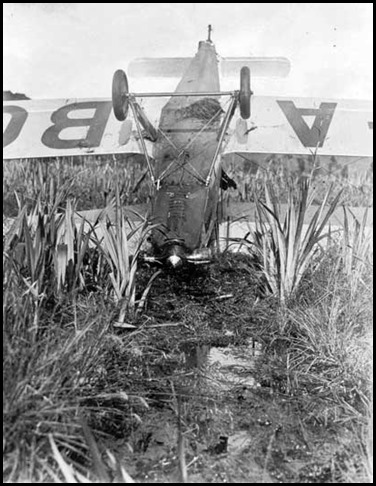 We left State
Highway 6 before Harihari and drove six or seven miles to see the replica of Guy Menzies plane. Guy Menzies completed the first solo
crossing of the Tasman Sea on January 1931. He landed his single engine Avro
Avian plane, Southern
Cross Junior, in the La Fontaine swamp near Harihari, mistaking it
for a grassy paddock. The plane tipped over, an ignominious end to a
record-breaking flight, Guy had crossed the west coast of the
South Island near Ōkārito after eleven hours and forty
five minutes. Initially, local residents refused to
believe that he had flown across the Tasman Sea, and were only convinced when he
produced a sandwich bag from Sydney airport.
The landing spot
near Harihari is marked by a memorial. The swamp has been drained, and now
actually is a grassy
paddock.
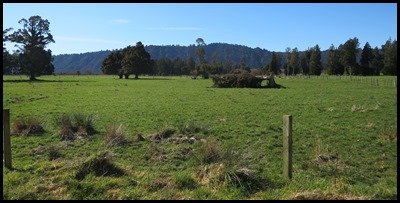 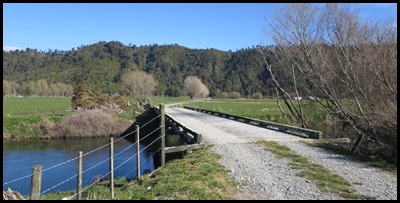 At the end of the
road we saw a paddock and crossed
a bridge.
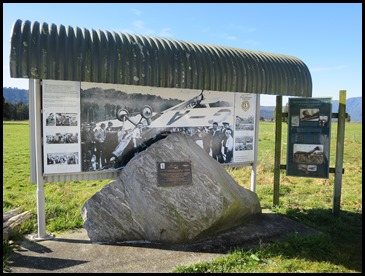 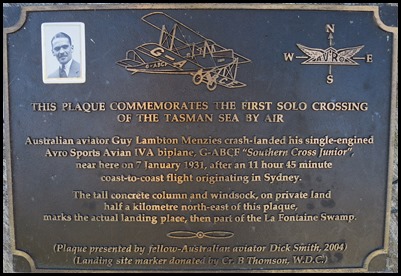 Just over the
bridge was the memorial to Guy Menzies with a very smart plaque, not a replica in
sight.
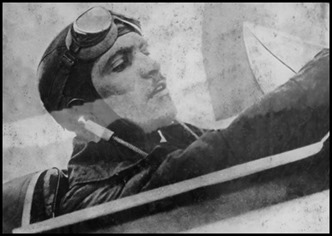 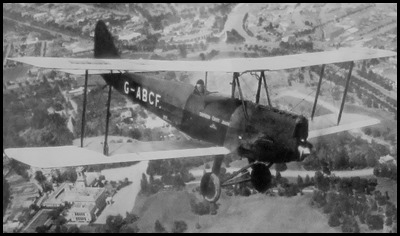 The Pilot: Guy Lambton Menzies was born on the 20th of August 1909,
the eldest of five children of Dr and Mrs Guy Menzies of Sydney. A high spirited
boy, he was intently interested in all things mechanical – the faster and
noisier the better. He did not excel at school and left at the age of sixteen.
During his teenage years he raced a motorcycle on Sydney speed tracks as Don
McKay, the Flying Scotsman, to conceal the activity from his parents. An
accident forced a change – to flying. Initially irresponsible, Guy continued
taking lessons with the Aero Club of New South Wales and by 1930 was an
accomplished and experienced aviator.
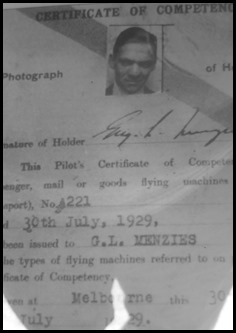 The first crossing of the Tasman by air had been achieved on the 10th
and 11th of September 1928 by Charles Kingsford
Smith and Charles
Ulm in the Southern
Cross, Charles Smith had also flown the plane from England to
Australia. Determined to fly the
Tasman, Guy with his new business partner Albert James, bought the Avro Sports
Avian biplane ‘Southern Cross Junior.
Guy spent hours studying aerial navigation, as
radio and navigational aids were still in their early development. For
direction, a bearing would need to be established between Sydney and some point
in New Zealand, then this bearing maintained by compass, making allowance for
drift either way, by cross winds. Ground speed had to estimated by adding or
subtracting head or tail winds to air speed. The only means of calculating wind
velocity and direction would be the pattern and height of the waves. No life
raft was carried on the flight. A solo bid non-stop from Perth to Sydney was
indicated so that night flying practice, maximum quantities
of fuel, eighteen hours flying time, and other preparations would not seem out
of place. After meticulous planning including equipment testing, meteorological
forecasts and learning stress reducing techniques, Guy was
ready.
A map of New Zealand could not be procured without
raising suspicion so Guy visited the New Zealand Government office in Sydney and
charmed an office worker who provided detailed maps and kept her promise of
secrecy. After much study, Guy chose Blenheim as his destination. Having only
taken delivery of the Avro Avian on Christmas Eve 1930, he spent the next
fortnight familiarising himself with the plane, and installing a second compass.
Guy wanted to make the flight as soon as possible to
take advantage of the short nights, so the decision was taken to leave on the
7th of January 1931. At Mascot Airport he bade farewell to seven friends and
family and the Controller of Aviation.
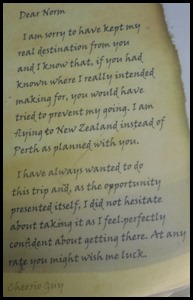 The Flight: Despite
fitting an extra fuel tank that gave the Avian eighteen hours endurance, Guy
realised he was unlikely to get approval for an over-water record attempt. He
kept his plans to himself, indicating instead that he was going for the
Sydney-Perth record. At 1am on the 7th of January 1931, Guy took off from Mascot
Aerodrome and headed east, not west. When opening their sealed envelopes, his
friends learned of his real destination.
One of them
read:- Dear Norm, I am sorry to have kept my real destination from
you and know that, if you had known where I really intended making for, you
would have tried to prevent my going. I am flying to New Zealand instead of
Perth as planned with you. I have always wanted
to do this trip and, as the opportunity presented itself, I did not hesitate
about taking it as I feel perfectly confident about getting there. At any rate
you might wish me luck. Cheerio Guy.
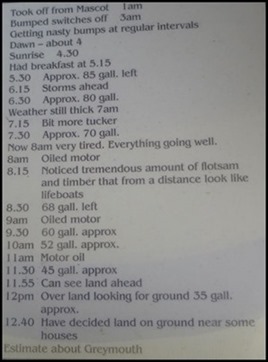 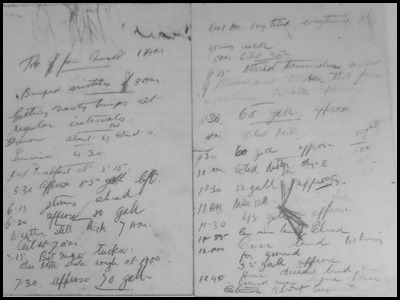 The
flight started in calm conditions, Guy saw the lights of Sydney fade
behind him as he headed east. After an hour or so he felt the first of an
easterly wind. This increased until he was being buffeted by squalls. Guy would estimate his
fuel reserves at half past each hour, jotting his results
down, and on the hour would pump more oil into the engine from an
auxiliary tank. The first big squall caused him to knock the ignition switch and
stall the plane. With discipline he went through his cockpit drill and rectified
the problem, gradually coaxing the plane back to cruising level. By 4am he was
beginning to feel fatigued. At 5:15 the wind had backed around to the north-west
and instinct told Guy he was being blown to the south but he resolutely stuck
with his planned bearing. He calculated at six that he had eighty gallons of
fuel, in theory enough for another ten hours flying. An hour later Guy
encountered a storm, causing his plane to rock and lurch violently. He fought
for control. Trying to fly above the bad weather at eleven thousand feet proved
too cold so he was forced to fly under the cloud and at one stage nearly hit the
sea, actually tasting salt...... The planes only blind flying aids were an
altimeter and a simple turn-and-bank indicator.
At eight in the morning with an estimated seventy gallons of fuel
left Guy noticed logs floating in the sea. At eleven o’clock as he flew between
three and five hundred feet, the weather became atrocious and Guy was flying
blind with huge tail winds. He estimated that with the help of these winds, he
should make landfall at any time. By 11:30 there was no sign of land and only
forty five gallons of fuel remained. Another tortuous hour passed before the
horizon darkened and eventually showed itself to be the land he had so longed to
see. Guy had made landfall on the southern West Coast close to Gillespie’s
Beach, a former goldmining settlement of the 1860’s. Only two people had lived
there since the mid 1920’s, brothers Ted and Bill Bagley who prospected for gold
in the black sands. On the 7th of January Ted was taking his turn ‘to go on the
medicine’ after the gold specks had accumulated. Riding with a packhorse to
Weheka – Fox Glacier, for supplies. He would then travel on to Hokitika to have
a high time before returning. At home, Bill heard a plane circling, looking up
he saw Guy fifty feet above the ground. Guy shouted “I want to land”. Bill
shouted back directions to a landing strip at Weheka but these were lost in the
engine noise. He pointed inland and Guy headed that way. However, thick weather
hid the mountain peaks, and having no wish to encounter them, he flew back up
the coast into the rain.for
“It was the fog and cloud
enshrouding the Southern Alps which prevented me going on to Christchurch. I
could not see very far, and did not know whether the mountains were two or
twelve thousand feet high. I could not take a risk, so I looked for the nearest
landing ground.”
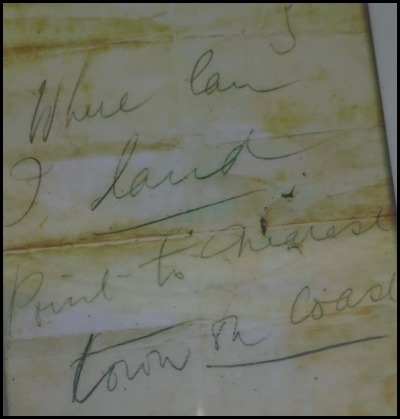 Flying above the seaside settlement of Ōkārito and
seeing people below, Guy scribbled a note, crammed it
in a bottle and threw it out. It was found many months later by Charlie Black
who was cutting gorse near the lagoon. The bottle broke but the note is kept at
the West Coast Historical Museum, Hokitika. With the tide in at Ōkārito and no clear paddocks, Guy continued north.
Turning inland at the Big Wanganui River mouth, now running short of
fuel.
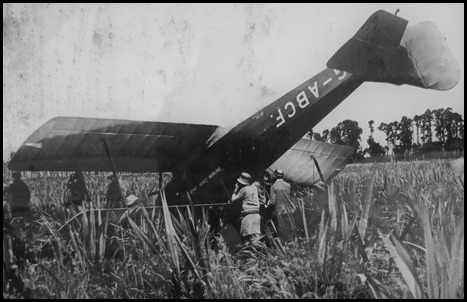 The Landing: Guy spotted what looked like pasture, not until nearly
down did flax bushes loom into view. “Near Hari Hari I spotted what looked
the goods and went down. My pick was bad, for the ground turned out to be soft
and marshy but it was too late to worry. The wheels went in, and the machine
stopped dead and then stood up on its beak.” Uninjured, Guy undid
his harness and dropped out of the cockpit. He then tried to make his
way to one of the farmhouses he had seen from the air, soon a local, Jack Hewer
demanded, “who the bloody hell are you ?” The young pilot explained he had just
flown from Australia but Jack wouldn’t
believe him until he saw the
plane.
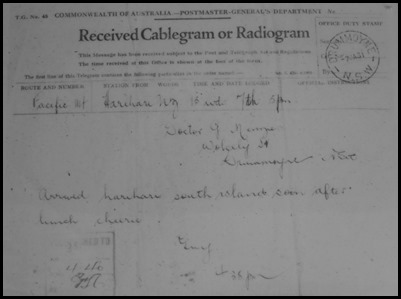 Some other locals were quickly on the scene, Alf
Wall who owned the farm where the plane ‘landed’, Gordon Mitchell and Jack
Searle – neighbouring farmers. Bert Kelly owner of the cream collection truck
who had seen the plane flying too low and feared the worst. Mrs Minnie Wall,
Alf’s wife, who had an endearing way of climbing on her roof for “a look around”
also saw the plane circling the area. Bill Berry Senior with his friends Bill
and Vic, witnessed the Avro Avian descent, these people quickly crossed streams
and farmland to make their way to the plane about a mile away.
Alf Wall took Guy to a local homestead where
afternoon tea was provided for everyone. A telephone call was made to the local
shopkeeper and postmaster George Rowley, to tell him of the flight and landing.
Following afternoon tea with the incredulous Harihari farmers, Guy was
eventually driven to the small telephone exchange in order to telegraph his
parents. Fifteen year old Marjorie Rowley sent it. Guy was driven in triumph to
Ross.
News of his flight was telegraphed around New Zealand and
Australia, the cablegram to his father was sent at
4.35pm and was delivered to Drummoyne, Sydney at 5.00pm, the message read:
Arrive Harihari south Island soon after lunch. Cheerio Guy.
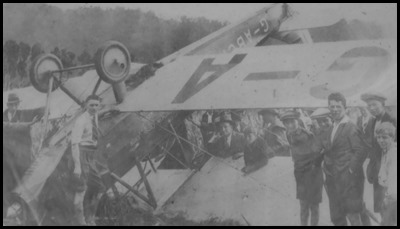 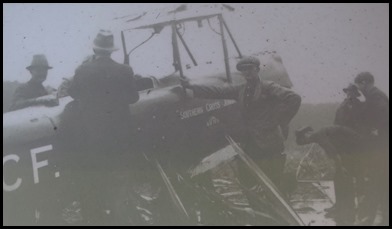 News spread and many made there way to the
‘landing’ site to be involved in this story in aviation history,
eventually Southern Cross was righted.
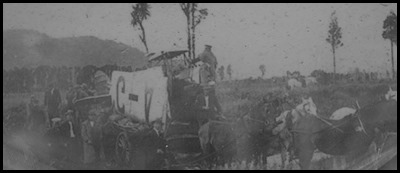 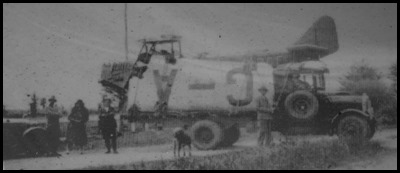 The locals helped load the plane onto a horse
and cart, driven by the capable hands of Mr Jock Adamson who crossed the
fields to the nearest road. One of Newman’s trucks
was waiting at the road to transport the plane to Hokitika where it would travel
by rail to Wigram Air Base for repair.
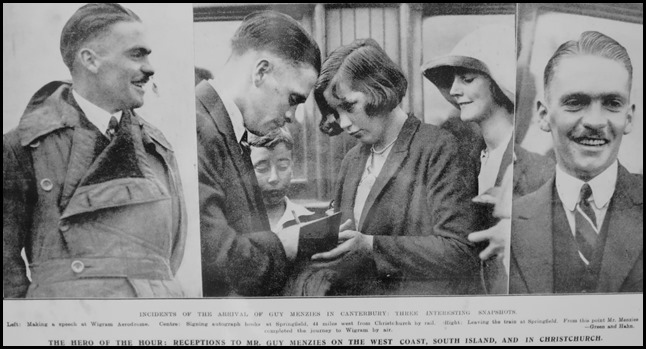 The hero was feted by delighted West
Coasters, Guy was soon joined by Albert James, his business partner and they set
off on a flying tour of the Dominion.
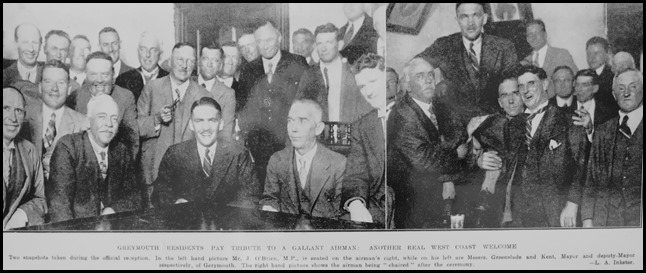 Greymouth reception.
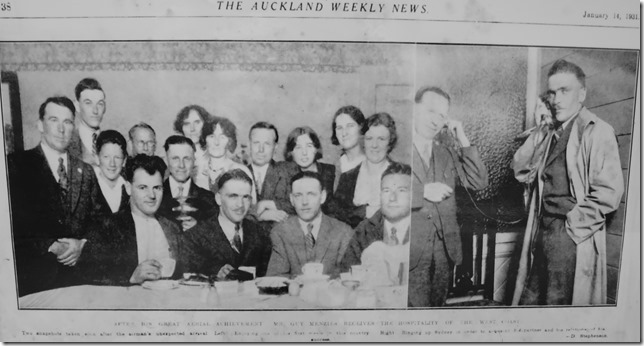 West Coast hospitality and ringing home
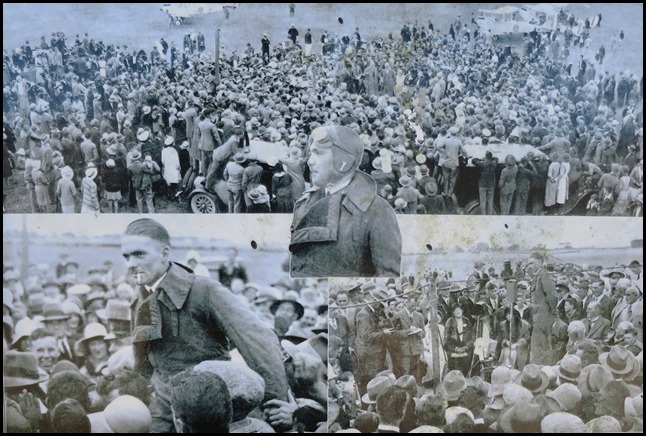 The hero.
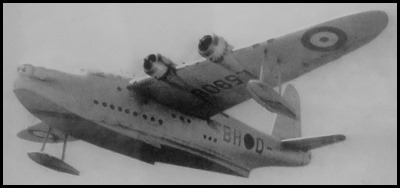 After the
Flight: Guy Menzies returned to a civic reception in Sydney where he
was awarded Freedom of the City. He and Albert James dissolved their business
partnership, with Albert retaining ownership of the Southern Cross. He
was killed a few weeks later when the plane crashed at Mascot. Guy Menzies’
piloting skills secured him a commission in the Royal Air Force. During the
1930’s he served with 23 Fighter Squadron in England. 205 Flying Boat in
Singapore, and 56 Fighter Squadron and 114 Bomber Squadron in the UK. Just
before World War Two broke out he went to 228 Squadron of Coastal Command and
Sunderland Flying Boats.
Squadron Leader Menzies served in the Meditteranean until he was killed on the
1st of November 1940 when his Sunderland was shot down by Italian Air Force
Fighters off the east coast of Sicily whilst flying from Malta. No remains of the aircraft or crew
were ever found. He is
commemorated at the Alamein
Memorial in Egypt.
On the 7th
January 2006, celebrations were held in Harihari to commemorate the 75th
anniversary of Menzies' trans-Tasman voyage, and were marked by a re-enactment
of the flight by adventurer Dick
Smith.
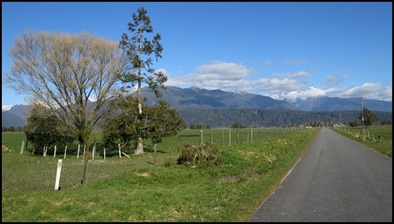 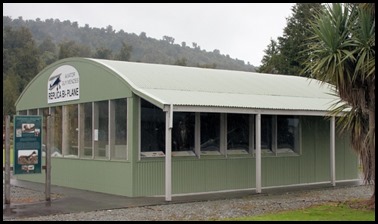 We left the memorial, drove back toward Harihari, once on the main road we passed a few
shops, then, the building that houses Guy
Menzies Replica.
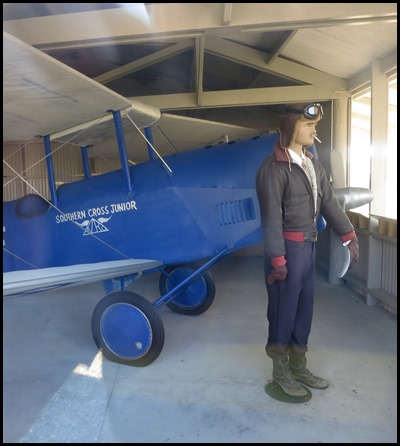 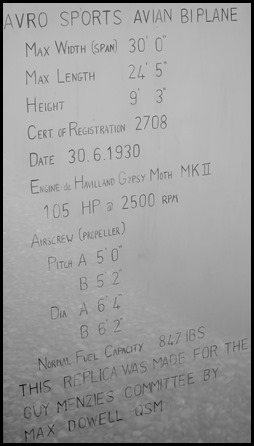 Sadly, the
building was locked and in the bright sun pictures through the glass were
limited. The best
two.
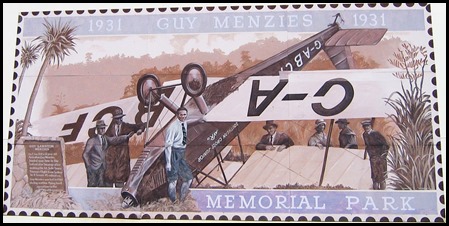 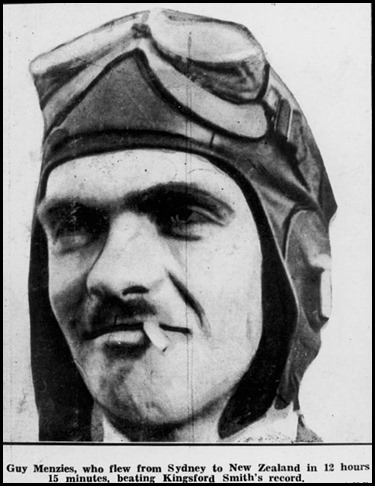
ALL IN ALL LOST TOO YOUNG A DARING AND BRAVE MAVERICK |